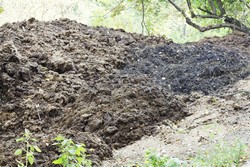Phosphorus recovery from agricultural residues
An increasing demand for food, biofuels and biomaterials is placing pressure on phosphorus resources – a key ingredient in the fertilisers required to fuel such growth. Since the EU relies entirely on imported phosphate rock (the raw material from which phosphorus fertilisers are produced, additional, renewable sources of phosphorus are needed. The EU-funded PHOSFARM(opens in new window) (Process for sustainable phosphorus recovery from agricultural residues by enzymatic process to enable a service business for the benefit of European farm community) initiative developed an industrial-scale process to efficiently recover phosphorus from agricultural and food waste. Although technologies exist for extracting dissolved inorganic phosphate from liquid fractions of agricultural waste, these methods cannot recover phosphorus organically bound within the solid fractions. In a breakthrough renewable technology, PHOSFARM recovered both organic and inorganic phosphorus from animal manure, food residues and organic waste from biogas plants. Researchers used enzymes that digest organic molecules to release bound phosphorus, recovering more than 90 % of the phosphorus present in these samples. They then precipitated phosphate fertilizer from the liquid waste fraction, and generated organic soil conditioner from the solid fraction. By mixing the inorganic phosphate with the organic soil conditioner, they can customise fertiliser according to a particular crop's needs. PHOSFARM also developed a method to immobilise enzymes to beads, to improve the enzyme utilisation. Another project innovation was a mobile unit that can operate independently or be easily integrated into already existing farms or other waste facilities. Meanwhile, a life-cycle assessment revealed that PHOSFARM's technology is as efficient as conventional process while having a lower impact on the environment. Project outcomes will not only help turn agricultural residues into valuable renewable resources, they will also help reduce Europe's reliance on countries that export phosphate rock.







